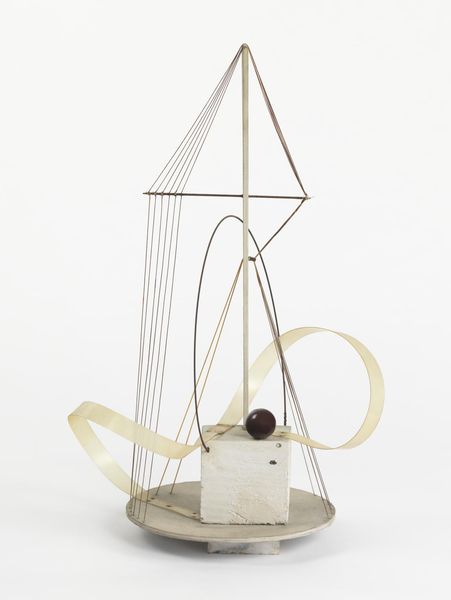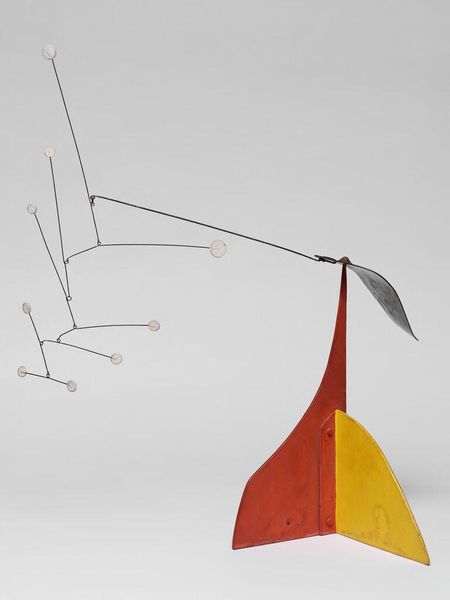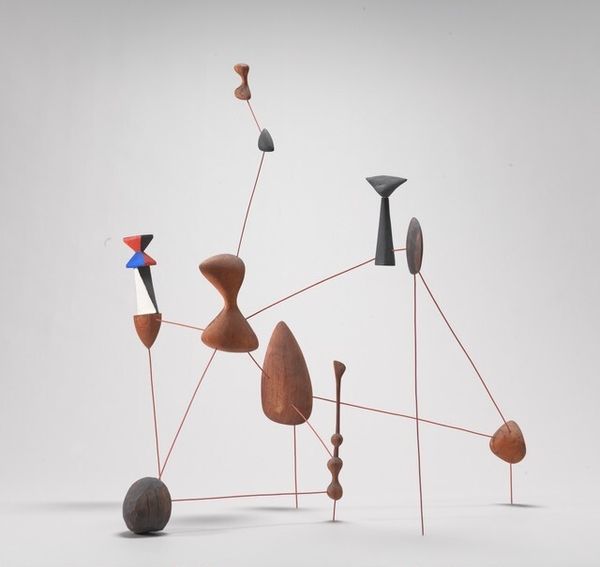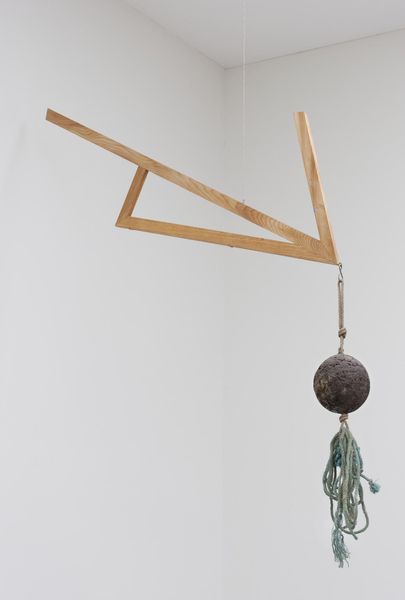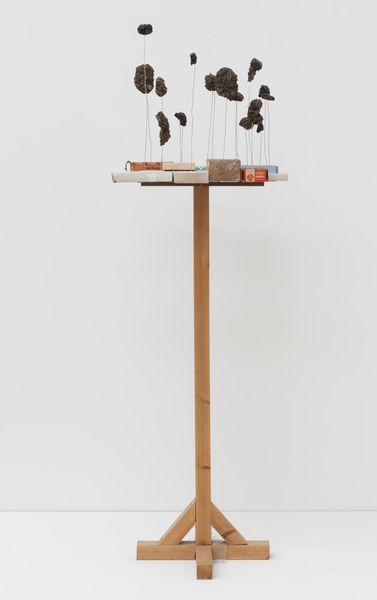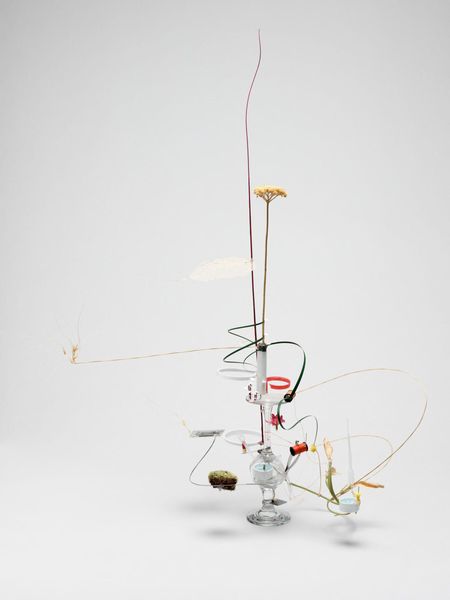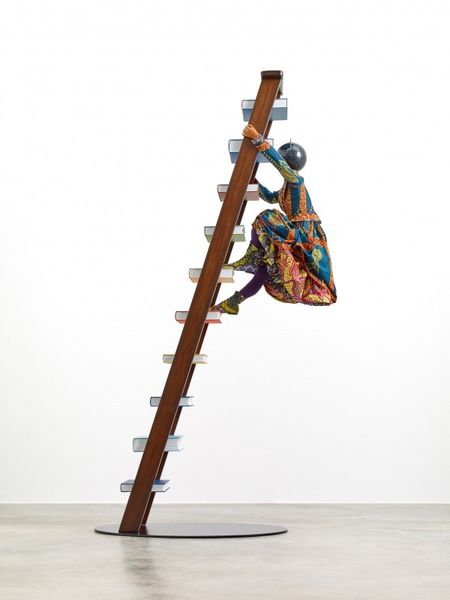
Copyright: Alexander Calder,Fair Use
Curator: Alexander Calder's "Gibraltar," created in 1936, is a striking mobile. It is comprised of carved wood, metal wire and ceramic elements, carefully arranged. What strikes you first about it? Editor: Its playful, almost precarious balance. There's a sense of levity, defying the heaviness implied by the rough, hewn wood. It feels very grounded despite having those little ceramic accents dancing around it on the wire. Curator: Absolutely. Calder's genius lies in achieving that tension. Consider how the geometric forms – the sphere, the flattened ovals, the peak of the larger chunk of wood – interact. Each shape possesses a distinct spatial relationship. It's like a visual equation constantly resolving. Editor: The juxtaposition of materials is really key. The rough, weathered wood grounds it in a sense of process and history. You can imagine the artist selecting each piece for its individual character, its own inherent story. Then adding in the refined manufactured metal and these perfectly rounded ceramic balls. How does that tension speak to you? Curator: It’s an intentional contrast, highlighting form over any narrative intention. The mobile pushes the boundaries of sculpture and introduces movement. It becomes an ever-changing composition of lines and shapes. I look at it in relation to some of Mondrian's works around the same time. You see Mondrian, with a different objective of course, is pushing line. It seems to be in dialogue with that type of thinking. Editor: It reminds me of found-object art from that same time, like Kurt Schwitters, especially when considering it being assembled in 1936. Materials become storytellers here. Was the metal readily available or scarce at the time? The economic implications of those choices in materiality speak loudly. I agree there are tensions between form and materials as well. It's less about inherent qualities of materials and more about industrial versus natural objects and how we assign value to the object. Curator: An astute observation. The balance and play of materials—both formally and culturally—yields endless interpretations. Thank you for sharing. Editor: Indeed. It underscores that the power in Calder is finding elegance in how humble materials can challenge our understanding.
Comments
No comments
Be the first to comment and join the conversation on the ultimate creative platform.
